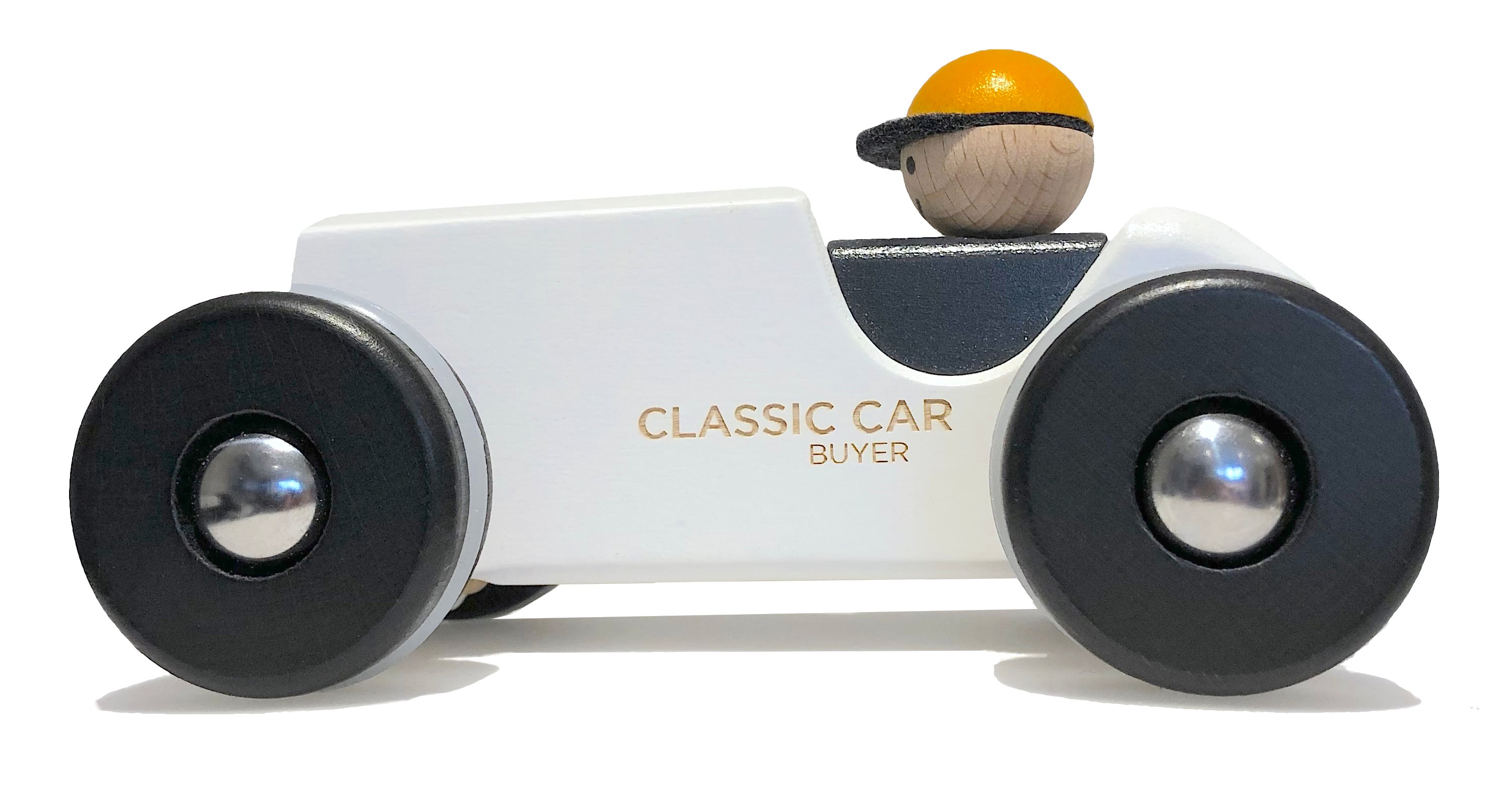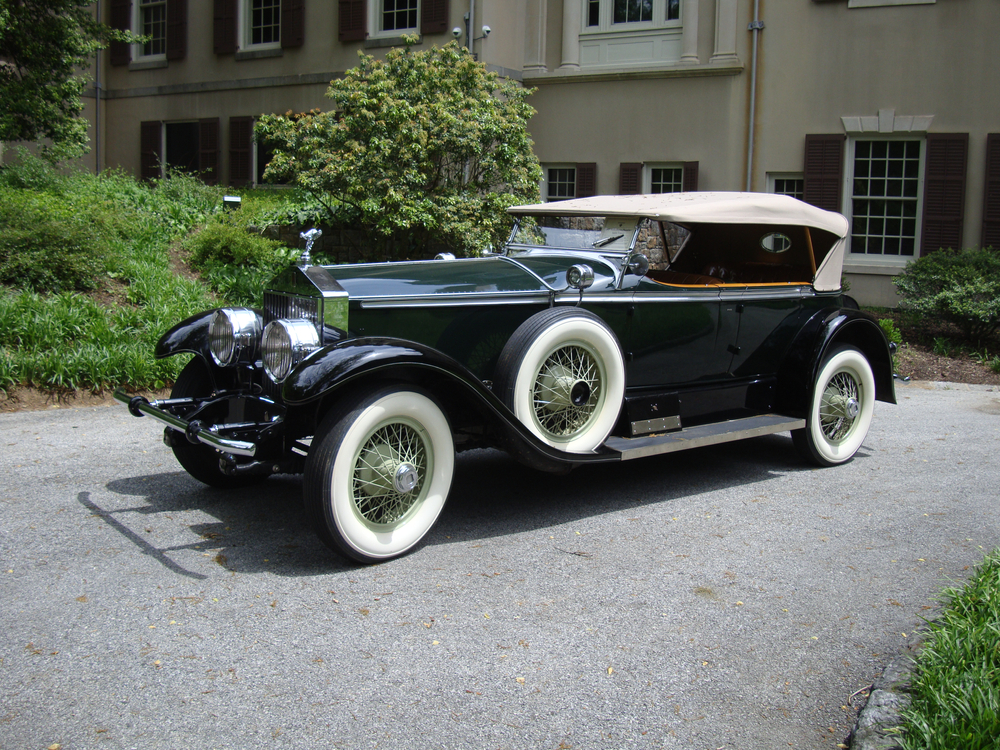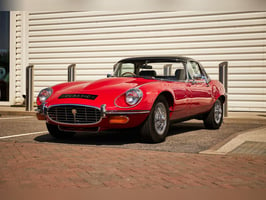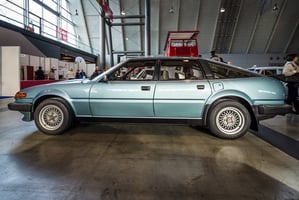In the classic car world, there are very few cars that can boast the same level of elegance,...
There aren’t many names in motoring that suggest such an aura of elegance, refinement and sheer prestige as the Rolls-Royce Phantom. First brought to us in 1925, the Phantom has spent the past century redefining what it means to travel in the ultimate of style. Often chauffeuring kings and queens and Hollywood stars, it has been the car of choice for those who simply expect the best. As this model celebrates its centenary in 2025, we thought it would be worth reflecting on its extraordinary journey through history…

The very first Phantom, known retrospectively as the Phantom I (1925-1931), replaced the celebrated Silver Ghost, itself a car widely regarded as ‘the best in the world’. Rolls-Royce had much to live up to, and it did so by creating a car that blended silent running with unmatched engineering at the time. Powered by a 7.7 litre straight-six engine, delivering smooth yet authoritative performance, it was capable of reaching around 80 mph, which was impressive for such a large vehicle of the time. It was as much a work of art as it was a means of transport, with bespoke coachwork built by master craftsmen to the exact desires of its individual owner.
The Phantom II (1929-1936) carried the torch with a revised version of the 7.7 litre straight-six, but mounted on a brand new, lower, stiffer chassis, which gave it a more sporting character and greater high-speed stability.

The Phantom III (1936-1939) became a technological milestone, introducing the model’s first V12 engine - a 7.3 litre unit capable of doing around 100 mph, making it one of the most advanced luxury cars of the pre-war era.
After the Second World War came the highly exclusive Phantom IV (1950-1956). Only 18 were built, each reserved solely for royalty and heads of state. Beneath the bonnet was a 5.7 litre straight-eight engine, chosen for its smoothness and torque. Quite a step up!
The Phantom V (1959-1968) and Phantom VI (1968-1990) came to epitomise the grandeur of mid-century Rolls-Royce. Both were automatic, powered by 6.2 litre and later 6.75 litre V8 engines, and became icons of both state and celebrity occasions. Their towering presence, vast interiors and ability to glide almost silently at speed made them the ultimate statement of prestige.
When the Phantom VII was launched in 2003, under BMW stewardship, it was the dawn of a new time. Built on an all-new aluminium spaceframe, it featured a 6.75 litre V12 engine producing 453 bhp, allowing this 2.5 tonne car to surge from 0-60 mph in under six seconds! The Phantom VIII, introduced in 2017, refined the formula further with the same capacity V12, but twin-turbocharged for 563 bhp, delivering near-silent progress at motorway speeds while offering probably the world’s most luxurious interior.

What sets the Phantom apart is not just its engineering excellence, but its symbolism. A Phantom it is a statement, and not just a car. Its imposing Pantheon grille, topped by the Spirit of Ecstasy, speaks of tradition, authority and timeless style. Inside, every detail is crafted by hand, from the finest leathers to bespoke wood veneers, with modern Phantoms even offering the ‘Starlight Headliner’, a ceiling studded with fibre-optic stars. Owners of Phantoms can personalise almost every element, ensuring no two of the cars are ever exactly alike.

As Rolls-Royce embraces an all-electric future, the centenary of the Phantom raises the question of what the next hundred years might hold. Will the Phantom of the future glide silently on electric power, as effortlessly as its ancestors once did with petrol? The recently launched all-electric Rolls-Royce Spectre suggests that the transition might be seamless…
What a history! For a century now, the Rolls-Royce Phantom has stood at the pinnacle of luxury motoring and the finest of craftsmanship, as a symbol of excellence that has spanned monarchs, wars and revolutions in technology.
Quite simply, there is nothing else like it! Wonderful.







